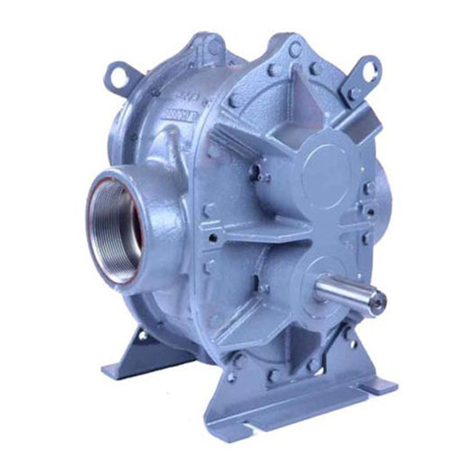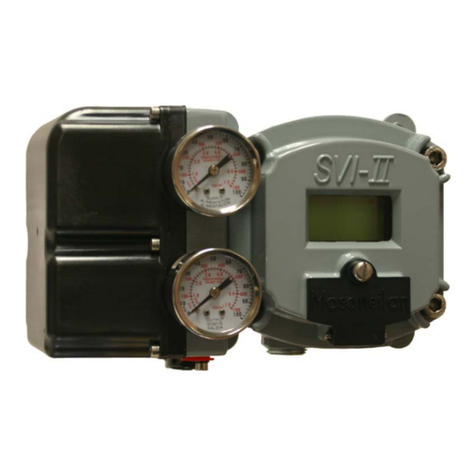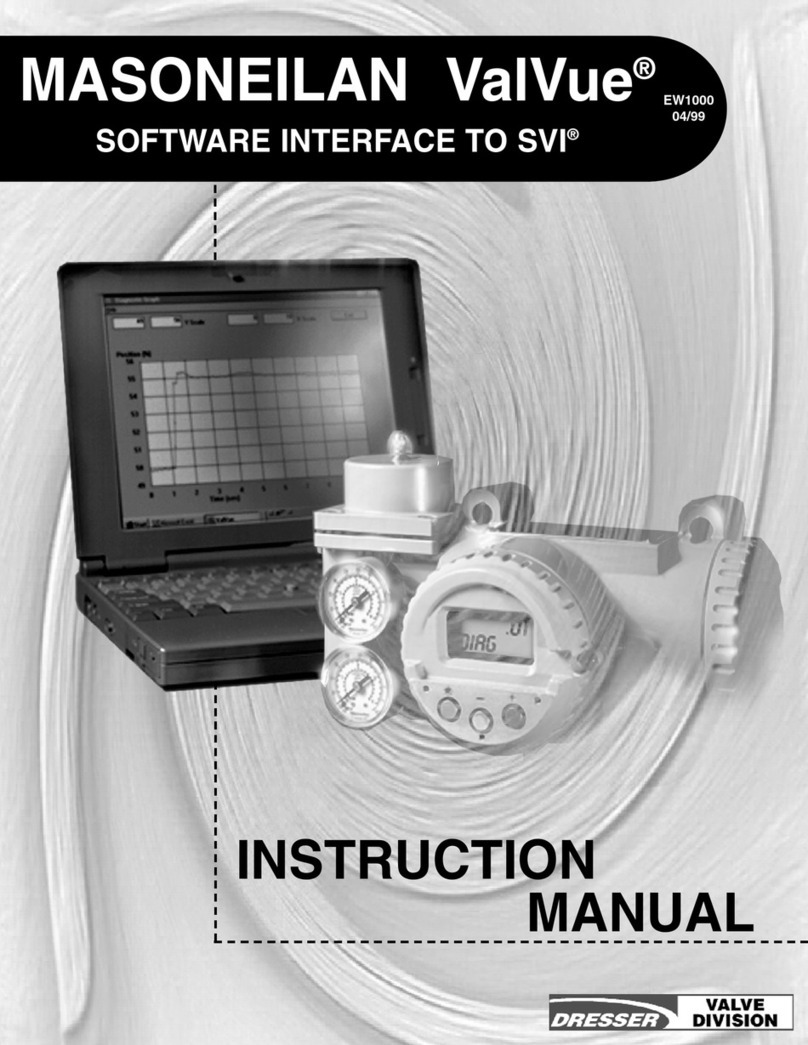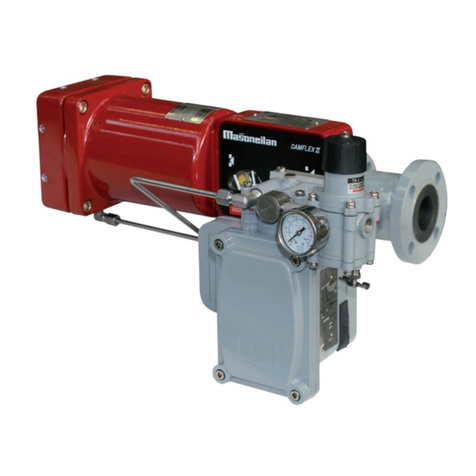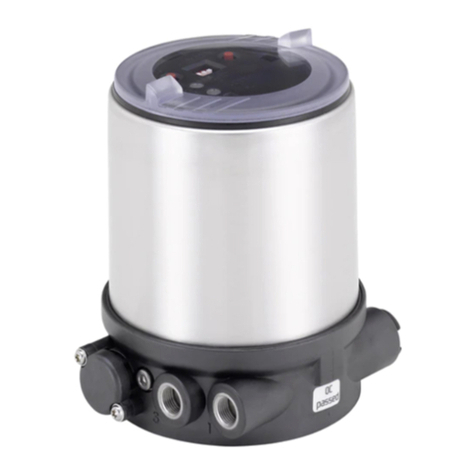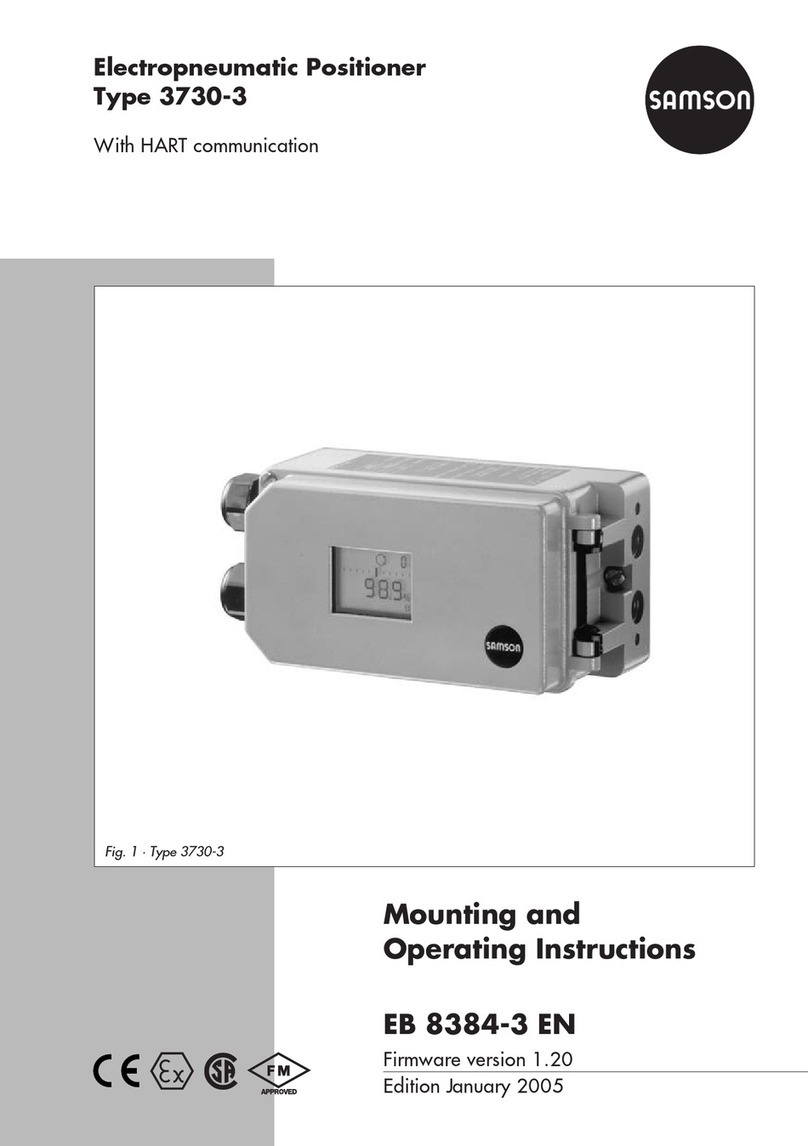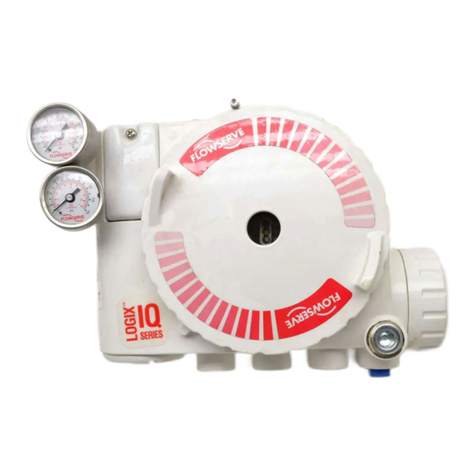
Instruction ES2007 4/98
Models 4700P and 4700E
4
or reverse action (increasing instrument signal produces
a decrease in output pressure). See Figures 2 and 3.
Note that the 4700E is not available with reverse action,
hence if the application demands reverse action, a 4700P
with an external I/P Transducer is required.
CAUTION: When installing a positioner on a
valve, it is necessary to choose the proper valve
action and positioner action. It is absolutely
necessary to place valve travel at the point
corresponding to the low end of the signal range
when removing or installing a cam. At this point,
feedback spring compression is at lowest value
and will facilitate cam removal or installation.
Prior to performing any work, read and under-
stand all items under “General Description and
Operation” and under “Mounting and Orienta-
tion.” Define the scope of work to be performed
and find the appropriate section that should be
followed.
The 4700 series Positioners have the same mounting
and linkage attachment dimensions as the 4600, 4600A,
4600B and 4700B series Positioners but have a different
layout of pneumatic connections. They can replace the
older models if operational requirements are identical and
pneumaticconnectionsarechanged. Themountingdetails
in this instruction cover only the more widely used valves
and actuators.
Cover Removal
The snap-on cover must be removed to access the zero
and span adjustments and to mount the positioner on the
valve.
To remove the cover, depress the latch bar inward as
shown in the figure below, pull cover away from body until
latch tab is clear, then pull along body axis to free the two
top locking tabs.
Optional Bypass Valve
(4700P, Direct Acting Model only)
During normal operation, the instrument signal is applied
directly to the positioner diaphragm and the regulated
supply pressure flows through the pilot valve to or from
the actuator.
The bypass valve module permits the positioner to be
isolated for maintenance while operating the valve directly
with the instrument signal. By turning the nylon bypass
valvetothebypassposition(theraisedarrowonthebypass
valvealignedwiththeword“Bypass”onthefacepositioner
bodyindicatesthisposition),thenormalpositioner“output”
pressure to the actuator is blocked and the instrument
signal is applied both to the positioner diaphragm and the
actuator. Thebypassvalvedoesnotblocksupplypressure
to the pilot. Therefore, the supply line should be shut off
before disassembling the positioner.
WARNING: When a valve (because of high pres-
suredrop)uses a supply pressure higher than 20
psig, the 3-15 psig instrument signal may not be
sufficient to operate the valve when the posi-
tioner is bypassed. Moreover, if the positioner
with a high supply pressure is bypassed sud-
denly, the high pressure in the actuator may
damage the diaphragm and/or the control instru-
ment. Therefore, the bypass valve should be
used only if the positioner supply pressure is 20
psig (140 kPa or 1, 4 bar), or at most 35 psig (240
kPa, or 2, 4 bar), or if the controller is capable of
operating the valve directly. When bypassing a
positioner, ensure that the controller output is
equal to supply required to operate valve.
Installation
Mounting and Orientation (Figures 2-10)
Thevalveisinstalledinthepipelinetooperateinoneoftwo
ways:
Air to Open Air to Close
Close on air failure Open on air failure
(Reverse Action) (Direct Action)
The choice depends on the desired air failure action. This
subject is dealt with in separate actuator instructions. The
positioner can operate either by direct action (increasing
instrumentsignalproducesanincreaseinoutputpressure)
Figure 1 - Cover Removal
Latch
Bar
Locking
Tabs






